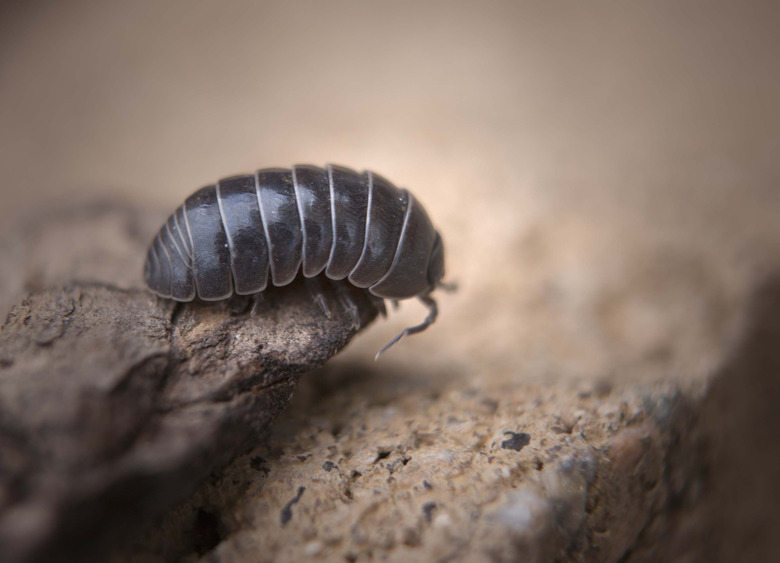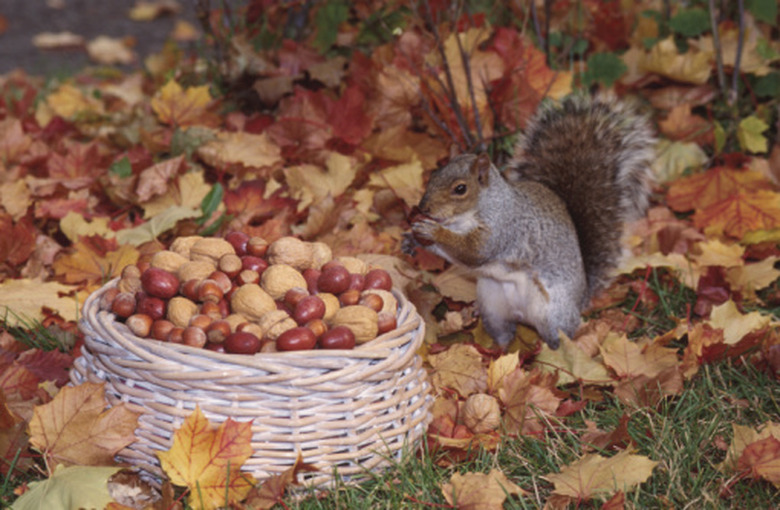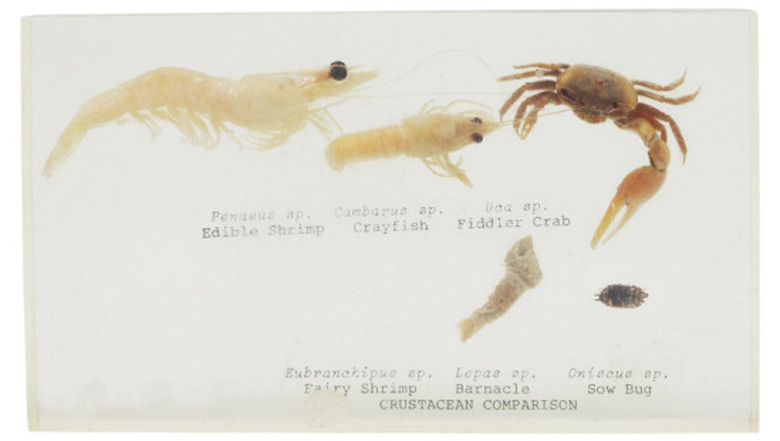Life Cycle Of A Roly Poly
Because they can be located almost anywhere in the United States, just about everyone knows something about the roly poly, or pillbug. The roly poly is an isopod, meaning it has an equal number of feet or legs on each side of its body. The roly poly has seven legs on each side, and each is similar and serves the same purpose. The 3/8-inch roly poly derives its name from the fact that it can roll itself into a tight ball when threatened.
The Female Nurtures Her Young
The Female Nurtures Her Young
The gender of the roly poly is only apparent to themselves, but they can be either male or female. The crustacean's life begins as a tiny egg, several dozen of which are laid by the female. She carries the eggs on her underside, between her legs, in a brood pouch called a marsupium. The gestation period for roly polies is 4-6 weeks. When hatched, they are fully formed but barely visible due to their small size. Roly polies develop into adults in about a year.
The Growing Roly Poly
The Growing Roly Poly
Roly polies have a hard outer shell called an exoskeleton. After hatching, they remain in the mother's pouch for about two months while continuing to grow. As they grow, the roly polies must shed their outer shell. This process takes place in two phases: the posterior shell is shed first, and within 2-3 days, the anterior shell falls off. Roly polies shed their shells about five times before reaching the full size. The outer shells appear to have many rounded body segments.
The Roly Poly Habitat
The Roly Poly Habitat
The life span of the roly poly is approximately three years. They produce three broods of young annually. On a daily basis, the roly poly helps to break down deteriorating plants into soil. Because it is a crustacean and not a insect, it is more closely related to shrimp or crayfish. Roly polies requires a moist environment to breathe through gill-like openings. They cannot, however, live underwater. They can be located under rocks, flower pots or in thick layers of leaves. They are prey for many animals.
More Interesting Facts About Roly Polies
More Interesting Facts About Roly Polies
While humans need iron and trace amounts of copper as nutrients in their blood to survive, roly polies need copper ions. When oxygenated, the copper ions cause their blood to appear blue. The need for copper is why roly polies are known to eat their own feces. They lose copper through defecation and ingest their feces to replenish copper ions. Because of their ability to tolerate heavy metals, they can thrive where other animals cannot. Copper spray is used as an insecticide for a number of pests, including snails and slugs, that eat fresh plant life. Sheep and other farm animals suffer physical damage from ingesting too much copper. Pillbugs are also referred to as woodlice, armadillo bugs and potato bugs.
Cite This Article
MLA
Vining, Linda. "Life Cycle Of A Roly Poly" sciencing.com, https://www.sciencing.com/life-cycle-roly-poly-8517270/. 22 November 2019.
APA
Vining, Linda. (2019, November 22). Life Cycle Of A Roly Poly. sciencing.com. Retrieved from https://www.sciencing.com/life-cycle-roly-poly-8517270/
Chicago
Vining, Linda. Life Cycle Of A Roly Poly last modified March 24, 2022. https://www.sciencing.com/life-cycle-roly-poly-8517270/




